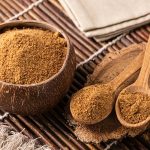
Not being able to destroy bacterial spores has been one of the major issues for food processing. If they remain in the processed food and conditions are suitable, they will germinate and begin growing to spoil the product and even worse, cause serious illness. Most sterilization processes still require at least some form of thermal processing and one of those, ohmic heating has begun to have industrial success in comparison to the more traditional method. Some excellent reviews of the process are to be found (Knirsch et al., 2010; Marcotte et al., 2012) and in many books devoted to novel food processing (Lima, 2010; Lyng and McKenna, 2011; Ahmed et al., 2012). There is much information available on-line such as the fact sheet aimed at potential users provided by Ohio State University (Ramaswamy et al.,)
Ohmic, joule or electrical resistance heating of food is not a new idea because it was being developed as the ‘Electro-Pure process’ nearly 100 years ago for pasteurizing milk (Anderson and Finklestein, 1919). The process is simple, alternating electrical current passes through the foodstuffs causing it to heat up and lends itself to continuous processing. The critical factor is that food must have some electrical resistance to current otherwise there is no heating effect.
General Principles Of Ohmic Heating
The general advantages of ohmic processing are rapidity, generally uniform heating even with distinctive two-phase systems (Zareifard et al., 2003), energy efficiency (Ghnimi et al., 2008), and a good retention of nutrients such as vitamins and colour (Vikram et al., 2005). The method is particularly attractive for treating particulate food where spores can reside. Solid particles are heated as rapidly as the liquid in which they bathe. The ohmic heating process allows for particulate foods to be treated, using HTST (High Temperature Short Time) sterilization. It has always been assumed ohmic heating was thermal but non-thermal effects might also operate, due to electric currents generated within the food. The electrical conductivity of the food determines the rate of ohmic heating and this alters as the process progresses (Halden et al., 1990), but in some foods is improved by preheating. The ohmic heating rate also varies with size, shape and positioning or orientation of the particle within the applied electric field. Differences in electric field effects also apply to food particles defined as isotropic i.e. exhibit the same material properties whatever the axis of the particulate (de Alwis et al., 1989).
As mentioned before, destroying bacterial spores has always been problematic. Ohmic processing began to be seen as a potential alternative to conventional heating over a decade ago when Bacillus subtilis spores at a loading of 10E7 CFU/ml, suspended in 0.1% NaCl solution were treated (Cho et al., 1999). Ohmic heating appeared to be more effective than conventional heating, judging by a comparison of the z values and examination of the survival curves. A double-heating effect led to similar findings. The results on spores have been confirmed for other species such as B. licheniformis in cloudberry jam (Martins et al., 2007). Some products lend themselves extremely well to this type of process but with mixed results. Take meatballs as an example of large in-homogeneous particles (30-40% w/w solids of meat and vegetable) containing Bacillus stearothermophilus spores with other chemical markers which were processed in 5% w/w starch solutions using a 5 kWatt Ohmic system (Land O’Lakes, Arden Hills, MN) (Kim et al., 1996). A variety of processing parameters were studied and it was found that lethality was higher in the centre of the meatball compared to the outer surface. This paper also pointed out how chemical markers might prove to be better indicators, and synonymous with destruction of the spores.
A recent study looked at the inactivation of bacteria themselves, Geobacillus stearothermophilus which has been resistant to most thermal processes. Compared to standard thermal processes, ohmic processing appeared much more effective at destroying the spores of this bacillus (Somavat et al., 2011). The benefit is certainly reduced processing time and an improved quality in the products. A couple of recent papers have recently studied the effectiveness of continuous ohmic heating in reducing Escherichia coli O157:H7, Salmonella typhimurium and Listeria monocytogenes in both tomato and orange juice (Sagong et al., 2011; Lee et al., 2012a & b), and salsa. Both articles examine the factors in ohmic heating which improve its efficacy in dealing with these organisms. As in keeping with the findings from other studies, the higher the applied electric field strength and duration time increased the reduction in all organisms but in the research on salsa, effectiveness depended on frequency and electrical conductivity rather than waveform. These authors also noted a higher retention of vitamin C compared to conventionally pasteurised juice but need to continue studies on longer term quality factors.
Ohmic heating equipment is now supplied by APV, Raztek Corp. (Sunnyvale, California USA) and C-Tech Innovation Ltd (UK).
I’d be interested to hear of examples of the process being applied industrially especially in the destruction of spore formers and of course any recent views of the process compared to other novel processes.
References
Ahmed, J. Rahman, M.S., Sensoy, I. (2012) Design of Ohmic Heating Processes. Chapt. 36 In: Handbook of Food Process Design. Publ. Blackwell Publ. Ltd. DOI: 10.1002/9781444398274.ch36
de Alwis, A.A.P., Halden, K., Fryer, P.J. (1989) Shape and conductivity effects in the ohmic heating of foods. Chem. Eng. Res. Design. 67, pp. 159-168
Anderson, A. K. and Finkelstein, R. 1919. A study of the electropure process of treating milk. J . Dairy Sci. 2, pp. 374-406.
Cho, H.-Y., Sastry, S.K., Yousef, A.E. (1999) Kinetics of inactivation of Bacillus subtilis spores by continuous or intermittent ohmic and conventional heating. Biotechnol. Bioeng.. 62 pp.368-372.
Ghnimi, S., Flach-Malaspina, N., Dresh. M. (2008) Evaluation of an ohmic heating unit for thermal processing of highly viscous liquids. Chem. Eng. Res.Design, 86, pp. 627-632.
Halden, K., De Alwis, A.A.P., Fryer, P.J. (1990) Changes in the electrical conductivity of foods during ohmic heating. Int. J. Food Sci. Technol. 25(1) pp. 9-25
Kim, H. J., Choi, Y. M., Yang, A. P. P., Yang, T. C. S., Taub, I. A., Giles, J., Ditusa, C., Chall, S., Zoltai, P. (1996). Microbiological and chemical investigation of ohmic heating of particulate foods using a 5 kW ohmic system. J. Food Proc. Preserv. 20(1) pp. 41-58 (Article)
Knirsch, M. C., Alves dos Santos, C., et al. (2010) Ohmic heating – a review. Trends Food Sci., Technol. 21 pp. 436-441
Lee, S.-Y., Ryu, S., Kang, D.-H. (2012a) Effect of frequency and waveform on inactivation of Escherichia coli O157:H7 and Salmonella typhimurium in salsa by ohmic heating. Appl. Environ. Microbiol. 78 (24) doi: 10.1128/AEM.01802-12
Lee, S.-Y., Sagong, H.-G., Ryu, D.-H., Kang, D.-H. (2012b) Effect of continuous ohmic heating to inactivate Escherichia coli O157:H7, Salmonella typhimurium and Listeria monocytogenes in orange juice and tomato juice. J. Appl. Microbiol. 112(4) pp. 723-731
Lima, M (2010) Food Preservation Aspects of Ohmic Heating. In: Handbook of Food Preservation. edt. Rahman, S. ISBN Chapt. 30 pp. 742-750
Lyng, J.G., McKenna, B.M. (2011) Ohmic Heating of Foods. Chapt. 7 In: Alternatives to Conventional Food Processing, Edt. Proctor A. RSC Green Chemistry Series. ISBN 978-1-84973-037-2 pp. 307-342
Ohio State University
Marcotte, M., Ramaswamy, H.S., Sastry, S., Abdelrahim, K., Fryer, P.J. (2012) Ohmic Heating in Food Processing. CRC Press. Routledge, Taylor & Francis Group Hardback: 978-1-42-007108-5
Pereira, P.R., Martins, J., Mateus, C., Texeira, J.A. Vicente, A.A. Death kinetics of Escherichia coli in Goat Milk and Bacillus licheniformis in cloudberry jam treated by ohmic heating. (2006) Proc. 33rd Int. Conf. Slovak Society of Chemical Engineering. Tatranske Matliare May 22-26th
Ramaswamy, R., Balasubramaniam, V.M. Sastry, S.K. Ohmic Heating of Foods. Fact Sheet for Food Processors. FSE-4-05 http://ohioline.osu.edu/fse-fact/0004.html Accessed 22nd November 2012. (Link no longer available – 21st August 2017)
Ruan, R., Ye, X., Chen, P., & Doona, C. J. (2004). Ohmic heating. Chapt. 13 In: P. Richardson (Ed.), Thermal technologies in food processing. Cambridge, England: Woodhead Publishing in Food Sci. Technol. pp.241-265.
Sagong, H.-G., Park, S-H., Choi, Y-J., Sangryeol, R., Dong-Hyun, K. (2011) Inactivation of Escherichia coli O157:H7, Salmonella Typhimurium, and Listeria monocytogenes in Orange and Tomato Juice Using Ohmic Heating. J. Food Prot., 74(6) pp. 899-904
Somavat, R., Mohammed, H.M.H., Chung, Y.-K., Yousef, A.E., Sastry, S.K. (2011) Accelerated inactivation of Geobacillus stearothermophilus spores by ohmic heating. J. Food Eng., 108(1) pp. 69-76
Vikram, V. B., Ramesh, M. N., Prapulla, S. G. (2005). Thermal degradation kinetics of nutrients in orange juice heated by electromagnetic and conventional methods. J. Food Eng., 69, pp. 31–40.
Zareifard, M. R., Ramaswamy, H. S., Trigui, M., Marcotte, M. (2003). Ohmic heating behaviour and electrical conductivity of two-phase food Systems. Innovative Food Science and Emerging Technologies, 4, pp. 45–55


This is a one of the good writing on Ohmic heating. Only I would like to add that electrical conductivity of food and food mixture which in turn depends on food components: ionic components (salt), acid, and moisture mobility increase electrical conductivity, while fats, lipids, and alcohol decrease it.
GEA Process Engineering France has a Ohmic Heating Pilot Plant with the capacity of 150L-300L/hr.
Hi Shahidul,
Good to hear from you on this. Let me know if any other companies developing this technology as it seems to be so versatile.
I have trialled ohmic heating quite recently with GEA. I certainly think it is a nice piece of equipment if you get the processing conditions right. Agree with your commentator from meany years ago.